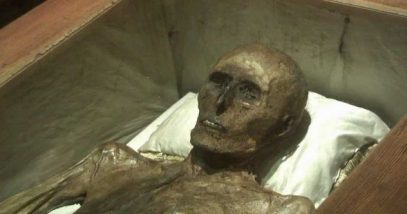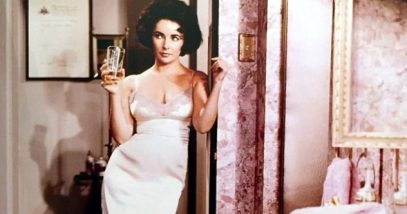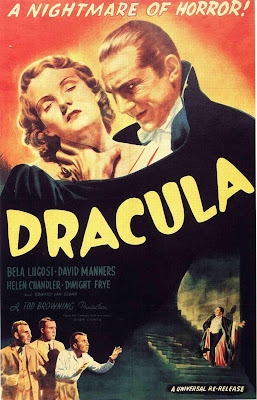copyright 2008 by Gary L. Pullman
Buffy the Vampire Slayer is a pastiche, as executive producer Marti Noxon freely admits in a comment on the series’ third season compact disc (CD). Most viewers believe the series was far superior during its first three seasons than it was thereafter. One reason for this, perhaps, is that the show based many of its earlier episodes upon classic horror monsters, offering Buffy’s take on them. If “imitation is the sincerest form of flattery,” as Charles Caleb Cotton said, Buffy is positively sycophantic toward such artists and movies as:
- Cat People (“The Pack”)
- The Terminator, and (if only in the title) Tarzan the Ape Man (“I Robot, You Jane”)
- A Nightmare on Elm Street (“Nightmares”)
- H. G. Wells’ The Invisible Man (“Out of Sight, Out of Mind”)
- Mary Shelley’s Frankenstein (“Some Assembly Required”)
- The Mummy (“Inca Mummy Girl”)
- The Terminator (“Ted”)
- Werewolf films and folklore (“Phases” and others)
- The Creature from the Black Lagoon (“Go Fish”)
- Stephen King’s Pet Semetary, Night of the Living Dead and the Gorgons (Greek mythology) (“Dead Man’s Party”)
- Hansel and Gretel (“Gingerbread”)
- Mary Shelley’s Frankenstein (“Primeval” and other episodes featuring Adam)
- Bram Stoker’s Dracula (“Buffy vs. Dracula”)
- Ground Hog Day (“Life Serial”)
- Tremors (“Beneath You”)
It’s fine to be “inspired” by other writers and their works, as long as other writers’ ideas are treated differently in one’s own work--as long as, to paraphrase Noxon, one makes the other’s creature feature one’s own. Just by relating classic horror monsters to contemporary teens and the problems and issues that they face in their daily lives, Buffy goes a long way in doing this. Of course, the characters, the setting, the conflicts, the themes, and pretty much every other dramatic element also differs as a result of bringing the monsters into a new arena, just as these elements are drastically different in Bram Stoker’s Dracula as compared to Stephen King’s ‘Salem’s Lot, despite the fact that both stories feature vampires.
It may be instructive to examine Buffy’s treatment of a couple of the classic horror monsters, so, in this post, we’ll take a look at the show’s use of three in the same episode: Stephen King’s Pet Semetary, Night of the Living Dead and the Gorgons of Greek mythology, all of which inform the plot of “Dead Man’s Party,” and at werewolf lore, which is developed in “Phases” and several of the series’ other episodes.
In “Dead Man’s Party,” Buffy Summers has just returned home to Sunnydale after running away to Los Angeles, where she’d been living in a motel and working as a waitress in Helen’s Kitchen (an allusion to New York City’s Hell’s Kitchen), calling herself by her middle name, Anne. Now that she’s returned, her friends and her mother, Joyce, insist upon throwing her a welcome-home party. Unfortunately, Buffy is still struggling with the “fallout” from her “love life,” as she characterizes her problematic relationship with Angel in “I Only Have Eyes for You”: in the episode previous to “Anne,” Buffy had to dispatch Angel to hell in order to prevent him from sucking the world into the same dimension, and, in an argument with her mother, who forbade her to leave the house, Joyce told Buffy not to come back if she left the house. Buffy’s attempts to repress her feelings are not working.

After Joyce, the owner of an art gallery, hangs a Nigerian mask on her bedroom wall, she announces to Buffy that she is hosting Buffy’s welcome-home party, and sends Buffy to the basement to retrieve their better dishes. As she does so, Buffy discovers the cadaver of a cat, which mother and daughter bury in the back yard. That night, the mask glows, and the cat is resurrected. The next day, it returns to the Summers’ house, shocking Buffy and Joyce, who call Buffy’s watcher (mentor), Rupert Giles, the high school librarian. Giles traps the animal in a cage and takes it to the library to study. The resurrection of the dead, buried cat is an allusion to Stephen King’s novel, Pet Sematary, in which a beloved pet is buried after being killed and returns (as, later, a dead child, buried in the same cemetery, does, as well).
During the party, it’s clear that Buffy is not coping well with her difficulties. She seems to have been avoiding her best friend and confidante, Willow Rosenberg. Xander, on the other hand, is too busy spending time with Cordelia Chase, his newfound girlfriend, to pay Buffy much attention. Buffy overhears Joyce confide in a friend as to how difficult it is for her to have Buffy back home again. Meanwhile, Buffy is surrounded by strangers who have crashed her party. Feeling alienated and alone, she packs her bags to run away again, but she’s caught by Joyce and Willow. In a confrontation between mother and daughter, in front of her friends and the other partygoers, Buffy is humiliated. Xander also confronts her, telling her that she must deal with her problems rather than trying to repress them: “You can’t just bury things, Buffy. They’ll come right back to get you.” They do just this, in the form of zombies.
In his research, Giles learns the secret of the Nigerian mask that Joyce has hung on her bedroom wall, and rushes to the Summers house to warn Joyce and Buffy, but, on the way, he’s attacked by the zombies.
As Joyce and Xander confront Buffy, the zombies crash Buffy’s party, attacking and killing guests in a scene reminiscent of Night of the Living Dead.
One drags Joyce’s friend, Pat, down a hallway. Buffy, Joyce, Xander, and Willow take refuge in Joyce’s bedroom, where they find Pat lying on the floor, while Willow’s boyfriend, Oz, and Cordelia hide in a closet downstairs. Checking her pulse, Willow confirms their fears: Pat is dead.
As Oz and Cordelia step out of the closet, they encounter Giles, who’s just arrived, and he explains that Joyce’s mask is imbued with the power of a zombie demon, Ovu Monabi, or Evil Eye. The zombies have come to retrieve it. Whoever dons the mask becomes the demon.
Pat shocks everyone by recovering. She was dead, but, now, she lives. She’s also wearing the mask, having become the zombie demon. In a fight with Buffy, the slayer knocks the demon through Joyce’s bedroom window, and both combatants tumble off the roof, to land in the yard below. During the fight, Buffy learns that the demon can paralyze people, after the fashion of Medusa and the other Gorgons of Greek mythology, whose look could turn their victims into stone. When Oz distracts the demon, it paralyzes him, giving Buffy the chance she needs to attack the monster, and she shoves a shovel into its eyes, blinding it. Defenseless, the demon (and the body of Pat) vanishes, and those who were paralyzed recover.
The episode ends with Buffy and Willow bonding as life returns to as-close-to-normal as it gets in Sunnydale.
This episode fuses elements of the plots of King’s Pet Sematary, George Romero’s Night of the Living Dead, and the Greek myth of the Gorgons. However, these elements are synthesized in a way that makes them unique to the demands of Buffy’s continuing storyline. The resurrection of the dead cat foreshadows Pat’s resurrection, both of which are accomplished by virtue of the power of the mask; the zombies are associated with the mask, but they also represent the powerful negative emotions that Buffy has sought to repress, or bury; and the power of unresolved emotional trauma, represented by the demonic mask and the demon’s power to paralyze its victims, represents Buffy’s alienation, her inability to cope, and the destructiveness to others of her unwillingness to communicate. In using these elements, the Buffy writers have made them their own, as Noxon says, and, in doing so, have transformed them rather than simply copied them off from other writers and stories.
“Phases,” “Wild at Heart,” and other Buffy episodes use werewolf legends and folklore in a similar way to develop the TV show’s continuing storylines and themes.

There hasn’t been a definitive story about werewolves the way there has been, with Bram Stoker’s novel, Dracula, a definitive story about vampires. The closest that the literature of horror has come in distilling the legends and folklore regarding the hirsute horror is, perhaps, The Wolfman, starring Lon Chaney. For the most part, however, the stories concerning werewolves remains fragmented and diverse, lacking a center. In the episodes of Buffy that concern the werewolf as an antagonist, the series provides a center, if not a definitive one, for this character, as it appears in the Buffy mythos.
The show’s writers cleverly play upon the idea that the creature is a monster only on the night preceding a full moon, on the night of the full moon, and on the night following the full moon, or three days out of a month. (Traditionally, a werewolf is a werewolf only on the night of the full moon, but the show’s writers wanted to suggests that their three-day period is equivalent to a woman’s menstrual period, as Willow tells her boyfriend, Oz, the show‘s sometime-werewolf, “Three days out of the month, I’m not much fun to be around, either.”)
Willow, Buffy, Giles, and the other members of their clique protect Oz from a poacher whose specialty is werewolves. (He makes necklaces of their teeth and sells their pelts.) To protect Oz and those whom he might kill and devour were he allowed to run free during his “period,” Oz is locked inside the library’s rare books cage. In another departure from most werewolf lore, Oz suffers guilt, in “Beauty and the Beasts,” when he escapes from the cage and believes that he may be responsible for the death of a human being. In the same episode, he says, after having devoured part of the actual killer after a fight with him, which Oz, in his werewolf avatar, wins, he says, that, oddly enough, he feels full although he hasn’t eaten. Oz doesn’t recall his actions as a werewolf when he reverts to human form. Such forgetfulness is in keeping with traditional werewolf lore. However, this will change, he is assured by a fellow werewolf, Veruca, whom he meets in “Wild at Heart.” Veruca has been a werewolf longer than Oz, and, after they are intimate as werewolves (if such creatures can in any real sense of the word be intimate), she tells him that she can recall some of her experiences as a werewolf, and relishes them, as he will do as well, eventually. The prospect horrifies Oz rather than delighting him.
When Veruca approaches Oz the next night, he locks her inside the library book cage with him, and Willow finds their naked bodies, there, the next morning. Later, Veruca attacks Willow, but is saved by Oz, who, in his werewolf state, attacks and kills Veruca. Next, he turns on Willow, but Buffy’s arrival saves the witch, and, the next day, distraught at the thought that he may have killed Willow, Oz leaves Sunnydale to seek a cure for his lycanthropy.
When he finds the cure, Oz returns, finding that Willow has become enamored of another woman, her fellow college student, Tara Maclay. Enraged, he reverts to his vampire self, and attacks Tara, but he is subdued by a military platoon led by Buffy’s new boyfriend, Riley Finn. When Oz escapes, he leaves Sunnydale for good, accepting the fact that Willow loves Tara rather than him.
The romantic relationship that Oz has with Willow is another departure from traditional werewolf lore. One reason that the legends concerning this monster may remain fragmented and diverse rather than having acquired coherence and a more cohesive structure is that the beast, rather than the human, aspects of the monster have been highlighted historically. When the protagonist is more animal than man, character development is unlikely. One of Buffy’s more creative innovations with regard to the show’s use of werewolf folklore is to reverse this treatment, showing the humanity of the monster rather than the bestiality of the human. Because Oz is allowed to be not only a beast but a man, the writers can more fully develop both his character and the tradition out of which it, in part, comes. After all, werewolf is motivated, primarily, by instincts, but a person, being far more complex, is motivated by many impulses, instinctive, emotional, rational, and otherwise. The show’s use of the werewolf motif, like its use of the zombie motif, is complex, but it is also unique, because it makes it serve its own narrative and dramatic purposes. In so doing, the show makes these classic monsters its own, rather than simply using them as the monster of the week or the creature feature of the moment.




















